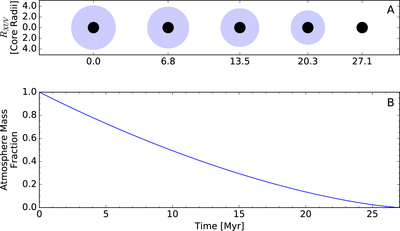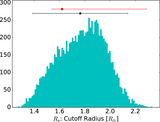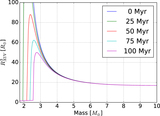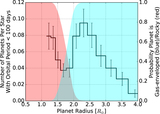Image Details

Caption: Figure 3.
Model run for a 2 M⊕ planet with isothermal atmospheric temperature set to T = 880 K. The planet was assumed to orbit at 0.1 au around a young, Sun-like star with the initial atmosphere representing 3 wt.%. The model parameters were set as T = 880 K, FXUV = 55 W m−2, α = 0.03, η = 0.1, pXUV = 5 Pa, Rg = 4157 J kg−1 K−1, and τ = 100 Myr. Plot (A) shows a snapshot of the planetary radius up to RXUV at times of 0, 6.8, 13.5, 20.3, and 27.1 Myr in the simulation. The blue region shows the relative size of the planetary atmosphere, and the black region shows the size of the rocky core. Plot (B) shows the remaining atmospheric mass fraction over time. We see that RXUV remains large even after most of the atmosphere has been lost.
Copyright and Terms & Conditions
© 2017. The American Astronomical Society. All rights reserved.







